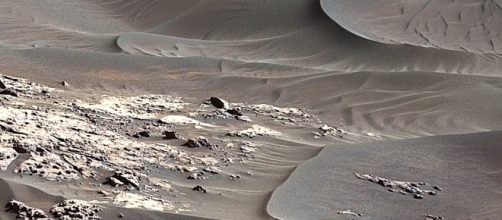Steve Jurczyk at NASA confirms that strange dunes are present on the surface of Mars. The discovery has the potential to revolutionize space communications. A recent study published in "Building a better World" reveals that there are roughly 20,000 Sand Dunes on the surface of Mars. Steve partners with Robers Roland at the MIT Lincoln Labs and Marcus Drake at the Bristol University on this project. Scientists claim thunderstorms caused erosion that explains the oddity of the planet. The snake-like dunes are present throughout the surface of the planet.
Some are very deep, while the others are partially covered with ancient oceans, ice sheets, and erupting volcanoes. Jurczyk says the surface of Mars is filled with fascinating bumps and scratches revealing its geological history. Previously, space scientists tried to capture pictures of the surface of Mars. Steve, Roberts, and Marcus believe that there is an incredible range of dunes over the planet. The red-colored sand dunes are mostly present in the southern hemisphere.
The origin of sand dunes
Marcus Drake at Bristol University confirms that sand dunes are scattered across Mars. A large population is present in the southern hemisphere, and the west of Hellas impact basin. This could be the origin of sand dunes.
However, scientists do not know anything about the properties of the soil. NASA experts claim that astronauts will soon collect soil samples. A rock, named as slip face, indicates the downwind side of the dune and the direction of its migration. The small-sized dunes are named as seif. They are present throughout Mars. A gentle phase of erosion creates the small hills and whorls on the upper surface of Mars, while the massive erosion leads to the formation of both large and small dunes.
What’s next?
The powerful HiRISE camera has snapped 20,000 high-resolution images of the Martian terrain from its orbit. Steve Jurczyk says the sand dunes look strange. Instead of using traditional techniques, researchers make the videos painstakingly by hand. Jurczyk requires more time and further research before he can say anything about the properties of the soil.
The distinct color of the pit walls is due to dust mixed into the ice. However, space scientists do not confirm anything. There are hundreds of impact craters on Mars caused by encounters with asteroids, but only some of them have names. Steve Jurczyk aims to name all sand dunes and craters of Mars.

